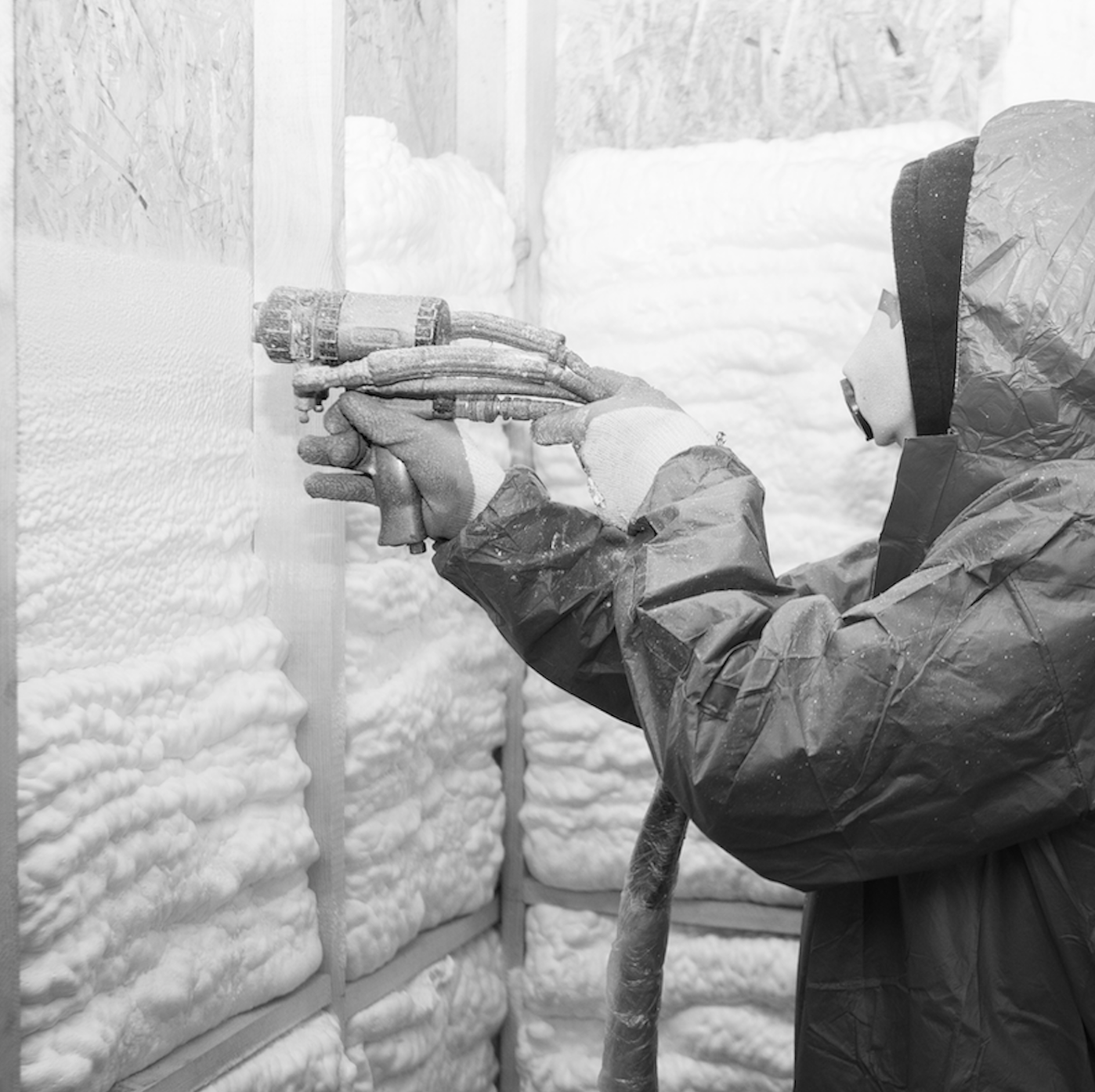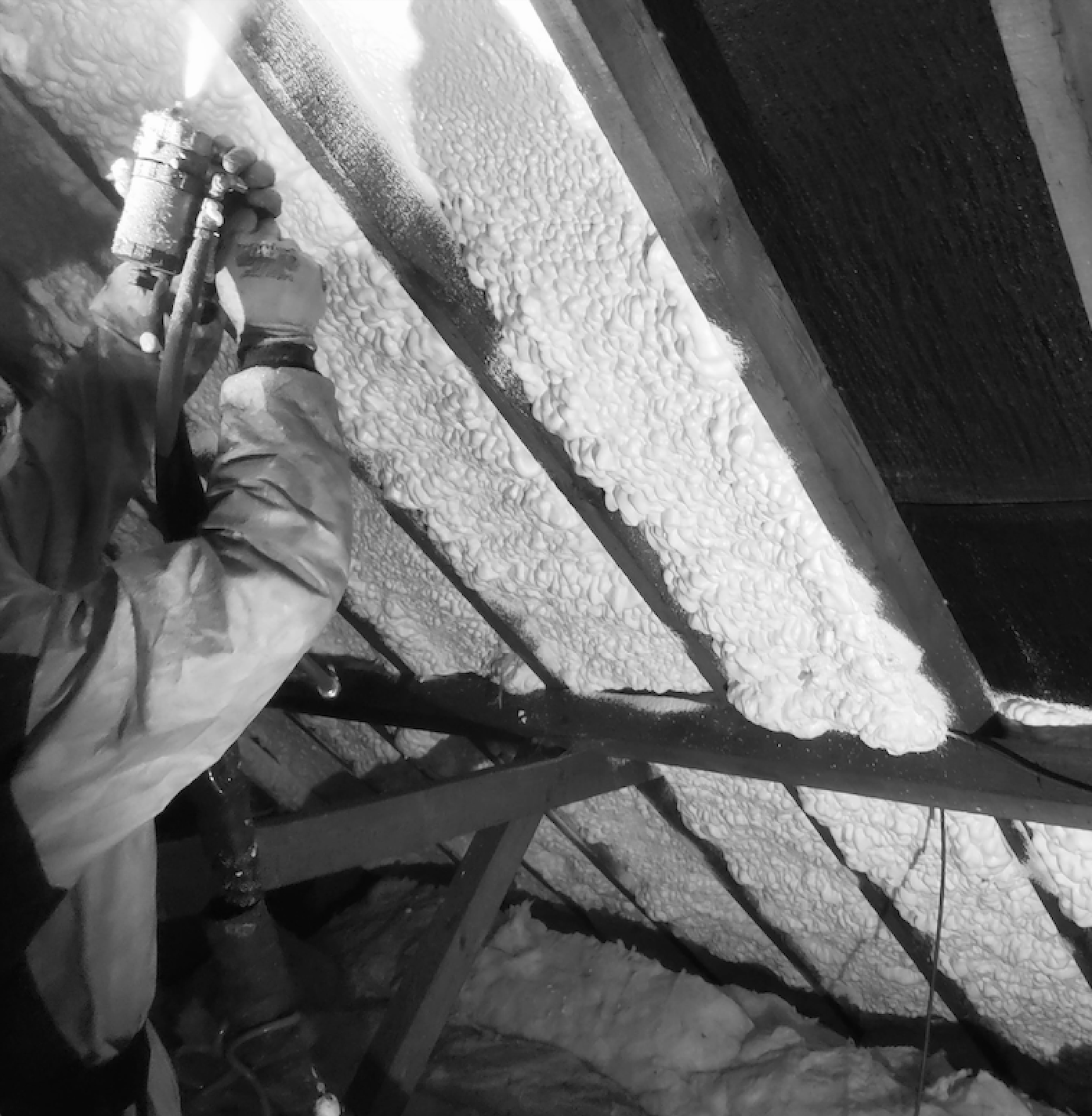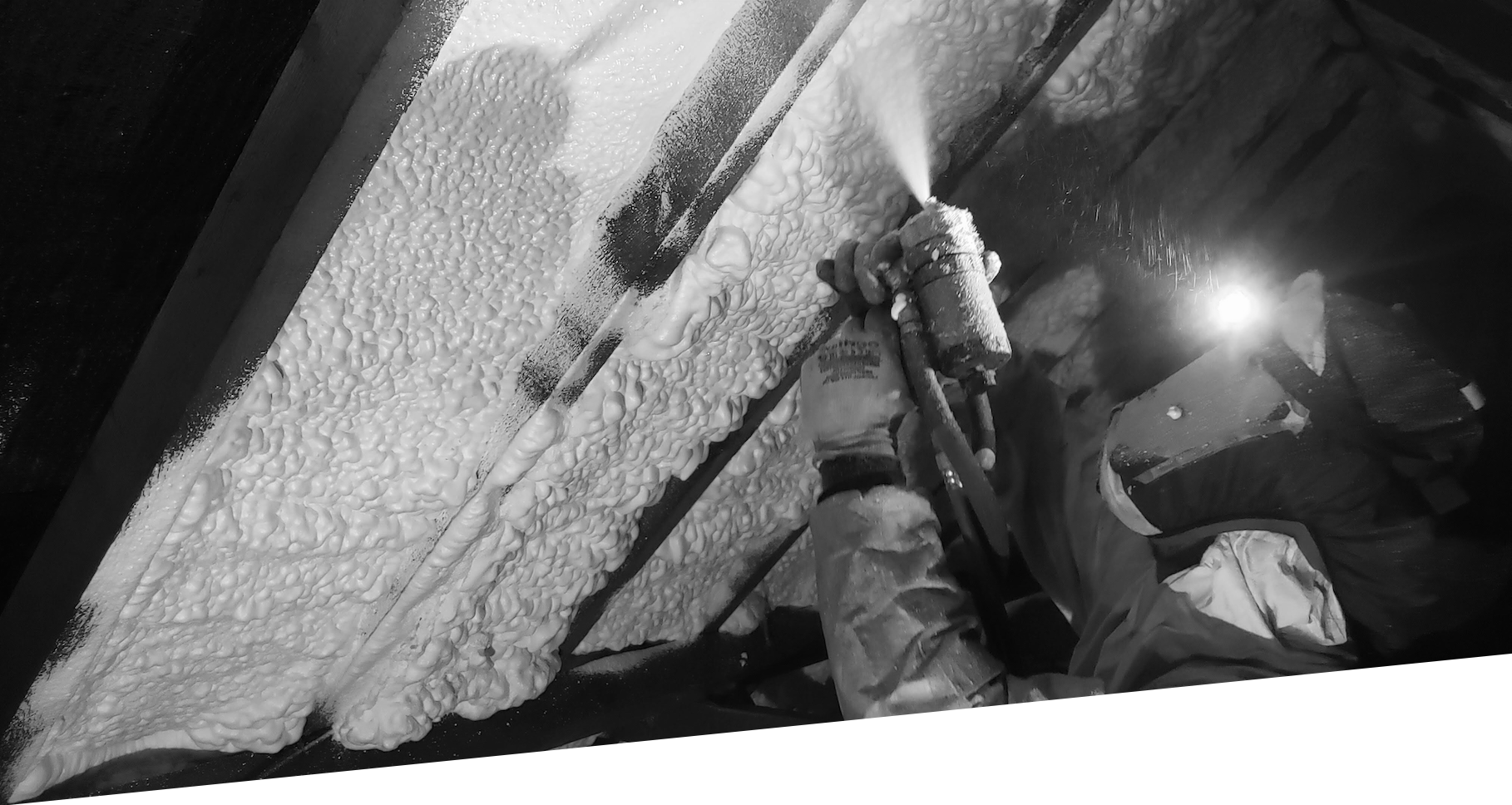Why Spray Foam Insulation
Today, more than ever, insulation is a crucial component in the battle against ever-increasing energy costs. Because it is seamless, spray foam insulation is much more energy-efficient than traditional fibre insulation. It bonds entirely to the building’s substrate and framing. This airtight seal ensures that a building’s heat and air conditioning are secured from the exterior elements.
Compared to fibreglass, spray insulation has various benefits:
it stops air leakage when fibreglass doesn’t;
fibreglass sags over time but spray foam does not sag or shrink;
fibreglass isn’t resistant to mould and moisture.
- Spray foam insulation has the highest R-value per inch over any other insulation on the market. Because air cannot move through spray foam insulation, the R-value remains constant no matter the outside conditions.
- Spray foam insulation reduces energy costs and increases the life of your HVAC system. It can save you up to 50% on your energy bills.
- Spray foam insulation will not shrink, settle or breakdown over time. It will retain its placement and shape for the lifetime of a building.
- Spray foam insulation is ridged, and when applied to roofs and walls, it can boost a building’s racking strength up to three times, preventing movement and increasing its ability to withstand wind loads.
- Spray foam insulation helps to create a more comfortable indoor environment by allowing to manage inside conditions such as where the air comes from, the amount of moisture it contains, and the entry of airborne allergens and minimising airborne sound transmission.
Air Leakage Comparison

Air Leakage Comparison
Up to 90% of all heat loss is due to air leakage across the building envelope
25% roof heat loss
25% doors/windows heat loss
25% floor heat loss
25% external walls heat loss
25% roof heat loss
25% doors/windows heat loss
25% floor heat loss
25% external walls heat loss
Spray Foam Insulated House
Reduce heat loss & save up to 50% on energy bius. Spray Foam Insulation System can be applied to walls, roofs, ceillings, floors.
Improves indoor air quality
By creating an airtight seal, spray foam insulation keeps the outdoor pollutants such as dust and dirt, mold and mildew spores, allergens and moisture from contaminating the inside air.
moisture control
LogicFoam spray foam insulation creates a seamless air seal with air leakage control. As it is vapour-permeable, any moisture buildup in the house can escape through the insulation.
absorbs up to 40% of sound energy
Spray Foam provides a high quality of soundproofing.
fire retardant
LogicFoam spray foam is considered to be fully fire retardant. The use of fire-resistant additives allows for spray foam insulation to be used in exposed areas.
airtight
Spray foam insulation provides an airtight barrier, reducing air movement between the interior and exterior environment.
strengthens overall integrity structure
Spray foam insulation adds structural integrity to walls, roofs and floors where it is applied, it also helps extend the lifespan of the building.
Improves indoor air quality
By creating an airtight seal, spray foam insulation keeps the outdoor pollutants such as dust and dirt, mold and mildew spores, allergens and moisture from contaminating the inside air.
moisture control
LogicFoam spray foam insulation creates a seamless air seal with air leakage control. As it is vapour-permeable, any moisture buildup in the house can escape through the insulation.
absorbs up to 40% of sound energy
Spray Foam provides a high quality of soundproofing.
fire retardant
LogicFoam spray foam is considered to be fully fire retardant. The use of fire-resistant additives allows for spray foam insulation to be used in exposed areas.
airtight
Spray foam insulation provides an airtight barrier, reducing air movement between the interior and exterior environment.
strengthens overall integrity structure
Spray foam insulation adds structural integrity to walls, roofs and floors where it is applied, it also helps extend the lifespan of the building.
Why Spray Foam
Cost
Spray foam insulation may appear to be a more expensive investment at first, but the money saved on energy costs will pay for itself in as little as three years.
Soundproofing
With its open cell architecture, LogicFoam soundproofing spray foam insulation provides excellent sound insulation with a sound reduction of 40% between frequencies 100hz and 5000hz.
Moisture Control
Open-cell spray foam insulation is a breathable solution that has been shown to reduce condensation and moisture. Our closed-cell spray foam insulation is exceptionally water-resistant due to its structure.
Sustainability
With spray foam insulation you can lower your energy use and, as a result, reduce your environmental impact. Because spray foam lasts longer and is more energy-efficient than traditional types of insulation, its overall sustainability rating is higher.
Air Seal
The biggest cause of heat loss from the building is air leakage. Spray foam insulation creates an airtight barrier and reduces air movement between the exterior and interior environment.
Structural Integrity
Spray foam insulation adds structural integrity by reinforcing exterior walls, roofs, cavities and floors.
Two Types Spray Foam
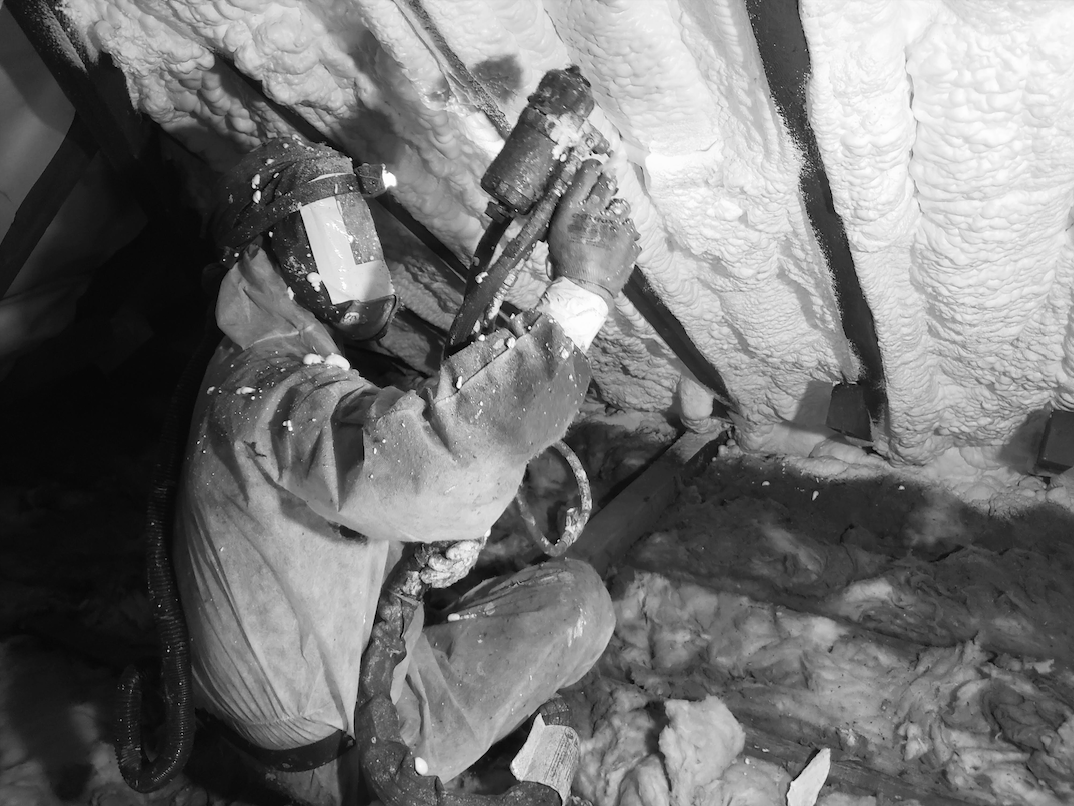
LogicFoam Open Cell Spray Foam
When open-cell spray foam insulation is applied, it expands to 100 times its original size, allowing it to be installed in hard-to-reach areas where traditional insulation could fail. It fills voids and cavities of any shape providing a continuous and protective air barrier. Open-cell spray foam is an ideal solution for domestic applications.
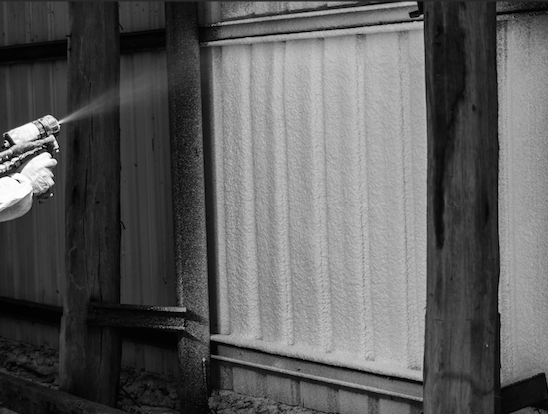
LogicFoam Closed Cell Spray Foam
Closed-cell spray foam insulation is denser than open-cell foam and has the capacity to insulate air, preventing draughts in the building and maintaining a consistent temperature. As it does not allow moisture to pass through freely, it is usually not used on surfaces that have wood and timber, making it more suitable for industrial properties where damp protection is not required.
Accreditation



Testimonials
I’d like to say thank you for the work done in my house. At all times, the operators were efficient, hardworking, and courteous. The work was completed on time, with attention to detail and to a high standard
Diya Patel-Stevenson
I recently had my loft insulated with spray foam and couldn't have imagined it going any better. All the work was done quickly and efficiently. Very happy with the result.
Mathew Sandoval
I just wanted to share a quick note that these guys do a great job. They did the roof insulation for us and we’re completely happy with their work. It was efficient, fast and without any mess. Excellent time management and reliable people to deal with. I would highly recommend this company
Jane Wyndham
Brands






Promice
Fully accredited contractors and installers
All of our spray foam products carry KIWA Certifications. Our installers are approved by KIWA BDA, NIA, STROMA and TRUSTMARK.
High Quality and Transparency
We always provide the best quality service to create real value for our customers. Transparency and openness are fundamental principles behind everything we do.
Eco Promise
As a business, we are committed to reducing our impact, and the impact of the construction industry on the environment. Spray foam insulation makes a massive difference to carbon emissions and the environment.
5 Day Lead Time Promise
No matter what kind of service you are interested in, we aim to provide this within five working days. Chat with us, email or call - we'll be happy to fulfil our promise.





